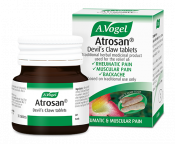What is turmeric?
Most of us will be familiar with turmeric spice which can be purchased at supermarkets and health food stores. This spice is made from the roots of the turmeric plant which is native to Asia. These roots are boiled, dried and then ground into an orange powder.
Turmeric is part of the ginger family and, like ginger plants, these ones can grow up to one meter high. The plants need lots of heat and rain to do well, though, so it’s unlikely you’ll see them flourish here in the UK.
Turmeric has a wide range of uses: from being a natural flavouring to a clothing dye. As well as this, the spice has a background in traditional medicines.

How does turmeric help sore muscles?
Turmeric root contains a chemical compound called curcumin. This is what gives the spice its bright colour, though research shows it can also have a positive impact on our health.
- Turmeric has antioxidant properties
Free radicals are molecules that can damage the body’s tissues and cells, including those in the muscles. As we get older, the body becomes less able to tackle free radicals which can contribute to problems like rheumatoid arthritis, inflammation and wrinkles.
Antioxidants are important here as they work to neutralise these free radicals thus protecting the cells and tissues. As curcumin is a natural antioxidant, this means that turmeric could offer some protection against free radicals too.
- Turmeric helps inflammation
Studies have widely shown that turmeric is anti-inflammatory.1 Conditions such as arthritis can result in inflammation2 and stiffness and so the spice may be of benefit here as it blocks inflammatory enzymes and proteins.3
These anti-inflammatory properties also indicate that turmeric could be of benefit to myositis sufferers. For those unfamiliar to it, this condition causes inflammation hereby resulting in pain, swelling, and muscle weakness. The problem can occur for a number of reasons including infection, as a side effect of certain drugs like statins, or as a result of injury.
- Turmeric can aid sore muscles after exercise
If you haven’t done a lot of exercise for a while, or if you partake in a new workout regime, the muscles can become stiff and sore. This is known as delayed onset muscle soreness (DOMS) and is a normal part of exercising.
There is some evidence to suggest that turmeric could help reduce the pain experienced after exercise.4 One particular study, for example, had participants do leg squats, gluteal stretches and more, then measured their pain after taking either curcumin or a placebo. Those who had taken curcumin experienced a reduction in their muscle pain, plus they recovered quicker from the workout too.5
Another piece of researched published in the British Journal of Sports Medicine found that turmeric could ease DOMS when applied topically to the muscles. This may be down to the anti-inflammatory properties of the spice.6
This led researchers in both studies to conclude that, although further research is still needed on the topic, turmeric is a good supplement to take post-workout.

The problem with turmeric studies
As indicated above, there is plenty of research that indicates the positive effects of turmeric and curcumin. That being said, we should approach such work with a little caution as often these studies use extremely high doses of curcumin or turmeric which people wouldn’t be able to get through their diet or supplements. Therefore, participants in this kind of research are much more likely than the average person to see the positive effects relating to inflammation, sore muscles and free radicals.
That being said, there is a huge volume of research out there that indicates the positive effects of turmeric. This would suggest it is a spice that definitely shouldn’t be ignored!
How much turmeric can you take a day?
Turmeric is actually quite hard for the body to absorb so you are unlikely to get too much through your diet alone – only about 1% is absorbed through the digestive system. If you want get a little more turmeric into your diet, research by the BBC programme ‘Trust Me I’m A Doctor’ found that heating it up makes the active ingredients easier to absorb.7
Turmeric recipes:
Another way to get an extra dose of turmeric, and hopefully see some of the benefits to your muscles that I have explained above, is to try a supplement. A spray is better absorbed by the body so I’d recommend looking for this kind of product over a tablet.
Does turmeric have any side effects?
Eating turmeric in very large amounts can cause side effects like stomach pain or sickness. However, as long as you follow the guidelines listed on any supplements, and don’t attempt to eat the spice with every meal, you should be able to avoid these kinds of symptoms.
Recent thinking suggests that over-use of antioxidants and anti-inflammatories after exercise (including over-the counter painkillers and perhaps even a very high quantity of supplements like turmeric which contain anti-inflammatory properties) may reduce the body’s adaptive response. This is because the body uses inflammatory signals to gauge the effort made during exercise. Therefore, this could, in turn, reduce the ability to improve in terms of strength and fitness.8
In light of this, many sports supplements have reduced the antioxidant content of their products because it reduces the body’s ability to make fitness gains when taken after exercise. This means it may be necessary to find an alternative, perhaps more natural option to ease sore muscles after exercise.
Our Atrosan Devil’s Claw tablets are made from extracts of the Devil’s Claw plant. This product not only helps muscle pain, but can address back pain, lumbago and joint pain too.
My Top Tip:Atrosan Devil's Claw tablets can help to releive muscle and joint pain, rheumatic pain and backache. “This is the only thing that helps the pain in my knees.”
Read what other people are saying about Atrosan Devil's Claw tablets. |
References
1 https://www.ncbi.nlm.nih.gov/pubmed/12676044
2 https://www.ncbi.nlm.nih.gov/pmc/articles/PMC5003001/
4 https://www.ncbi.nlm.nih.gov/pubmed/17332159
5 https://www.ncbi.nlm.nih.gov/pubmed/25795285#
6 https://bjsm.bmj.com/content/44/Suppl_1/i45.2
8 https://www.nytimes.com/2017/07/05/well/move/bring-on-the-exercise-hold-the-painkillers.html









